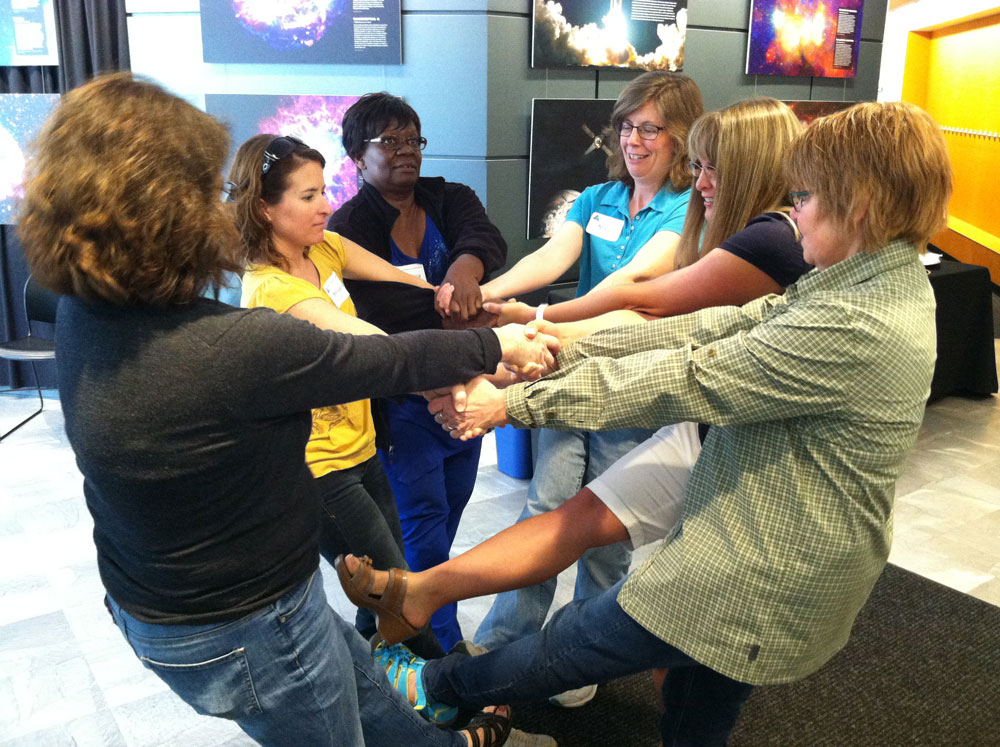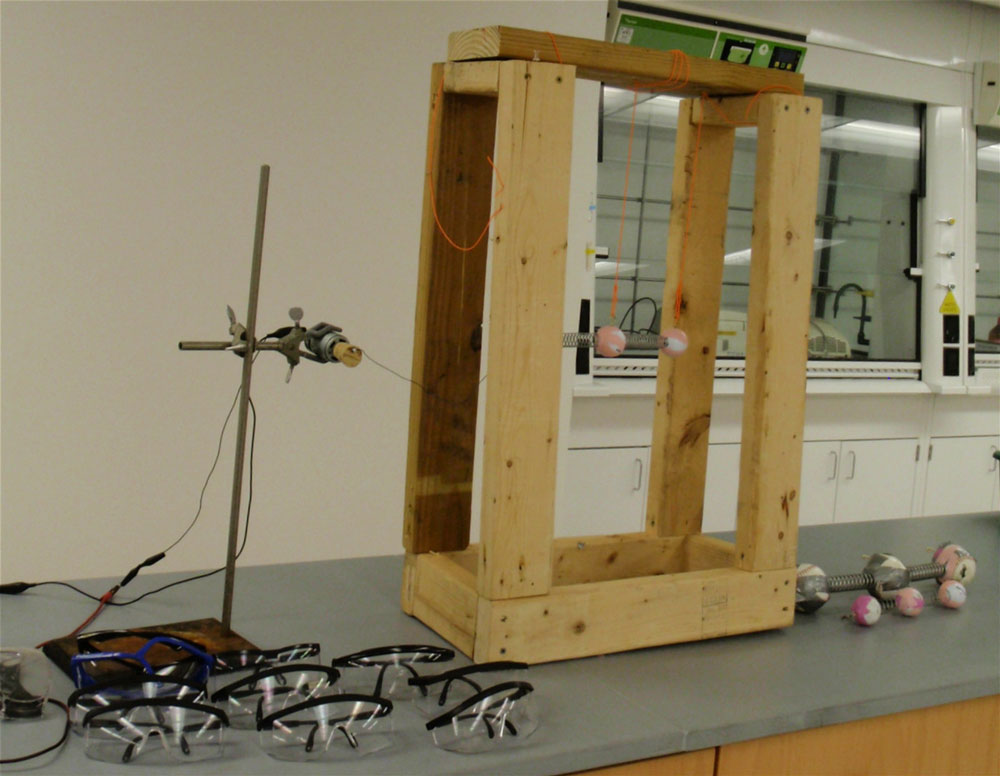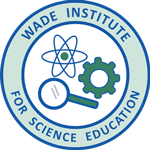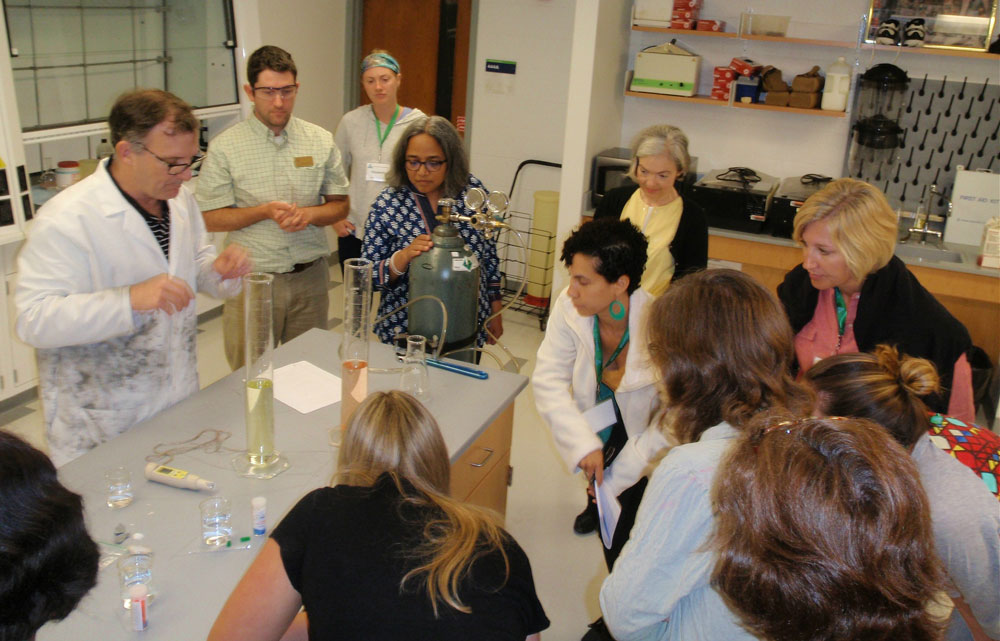Friday, September 22, 2017
For Immediate Release
Educators Explore Climate Change Concepts During MITS
MetroWest Summer Institute
Framingham, MA – From July 10 -14, 2017, middle and high school educators met in the MetroWest region of Massachusetts for “New Visions for a Changing World:  Towards a Pedagogy of Climate Change,” a Museum Institute for Teaching Science (MITS) Summer Professional Development Institute. These teachers explored the science behind climate change by breaking it down into its most basic elements and considering its impacts on Earth’s complex systems. Together, the educators explored the intersections of climate science, food production, biodiversity, infrastructure, and society.
Towards a Pedagogy of Climate Change,” a Museum Institute for Teaching Science (MITS) Summer Professional Development Institute. These teachers explored the science behind climate change by breaking it down into its most basic elements and considering its impacts on Earth’s complex systems. Together, the educators explored the intersections of climate science, food production, biodiversity, infrastructure, and society.
Hosted at Framingham State University, this summer institute tapped into the resources of the Christa Corrigan McAuliffe Center for Integrated Science Learning and the Center for Climate Change Education. Knowledgeable instructors sparked conversations about the complex nature of climate change throughout the workshop.
Educators spent time in the laboratory, focusing on infrared radiation  experiments to explore the physics of climate change. Using mechanical models, they visualized how the molecular structures of different greenhouse gases influence how much infrared radiation each can absorb. Applying their understandings to a new context, educators investigated the chemistry of ocean acidification and discussed the consequences of high levels of carbon dioxide in the atmosphere.
experiments to explore the physics of climate change. Using mechanical models, they visualized how the molecular structures of different greenhouse gases influence how much infrared radiation each can absorb. Applying their understandings to a new context, educators investigated the chemistry of ocean acidification and discussed the consequences of high levels of carbon dioxide in the atmosphere.
One teacher noted, “Really great job tying in the hard science. I feel I understand on a molecular level what’s happening much more clearly.”
After delving into the science behind global climate change and looking at future projections, educators made connections between climate change and everyday life. For instance, they tracked the foods eaten by themselves and their families, measured the energy content of these foods, and used this personalized data set to draw conclusions about how food waste contributes to the overall problem of global warming.
Educators then looked for the link between humanity and climate change. First, they reviewed historical data to gain a perspective on current climate change. They compared global carbon concentration values in the atmosphere to changes in the average global temperatures over time,noting the impact of the Industrial Revolution on global carbon levels. Second, participants focused on the sociological side of climate change. They explored how access to information, including weather and climate data, and regional socio-political perspectives influence mitigation actions and global decision-making by political leaders. Teachers then brainstormed multifaceted solutions to climate change and strategies for effective communication within their schools and communities.
“I loved learning about impacts around the world. The graphs of CO2 emissions contributions by countries [had an impact on my understanding]” one teacher noted.
Teachers took home ideas about how to meet the 2016 revised MA Science and Technology/Engineering standards using a study of climate change and gained insight about how they could use inquiry-based activities to help their students make conceptual connections.
###
The Museum Institute for Teaching Science specializes in providing hands-on, minds-on, inquiry-based STEM professional development for formal and informal educators. For more information, visit www.mits.org or call 617-328-1515.

